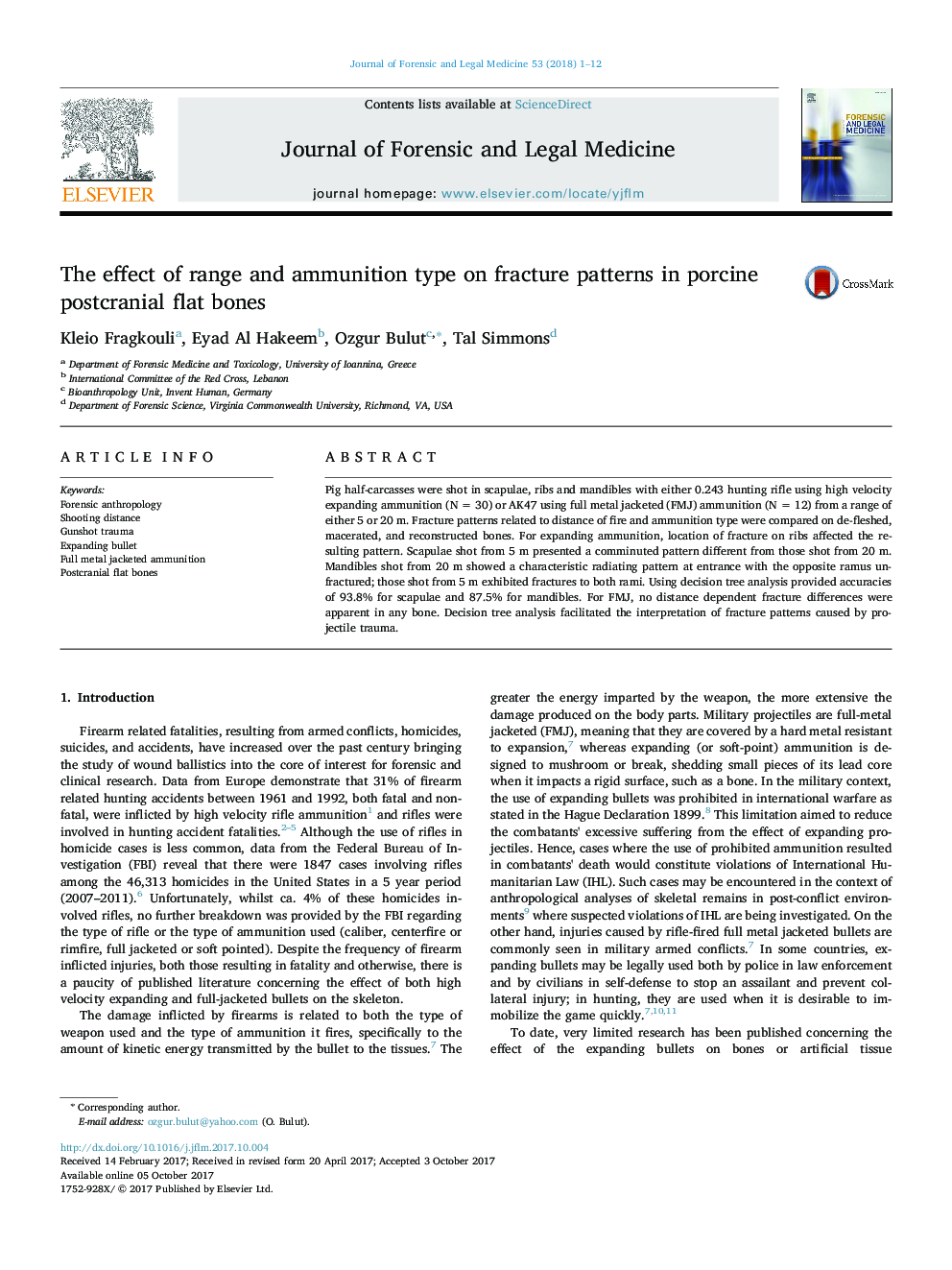| Article ID | Journal | Published Year | Pages | File Type |
|---|---|---|---|---|
| 6555083 | Journal of Forensic and Legal Medicine | 2018 | 12 Pages |
Abstract
Pig half-carcasses were shot in scapulae, ribs and mandibles with either 0.243 hunting rifle using high velocity expanding ammunition (NÂ =Â 30) or AK47 using full metal jacketed (FMJ) ammunition (NÂ =Â 12) from a range of either 5 or 20Â m. Fracture patterns related to distance of fire and ammunition type were compared on de-fleshed, macerated, and reconstructed bones. For expanding ammunition, location of fracture on ribs affected the resulting pattern. Scapulae shot from 5Â m presented a comminuted pattern different from those shot from 20Â m. Mandibles shot from 20Â m showed a characteristic radiating pattern at entrance with the opposite ramus un-fractured; those shot from 5Â m exhibited fractures to both rami. Using decision tree analysis provided accuracies of 93.8% for scapulae and 87.5% for mandibles. For FMJ, no distance dependent fracture differences were apparent in any bone. Decision tree analysis facilitated the interpretation of fracture patterns caused by projectile trauma.
Related Topics
Life Sciences
Biochemistry, Genetics and Molecular Biology
Genetics
Authors
Kleio Fragkouli, Eyad Al Hakeem, Ozgur Bulut, Tal Simmons,
